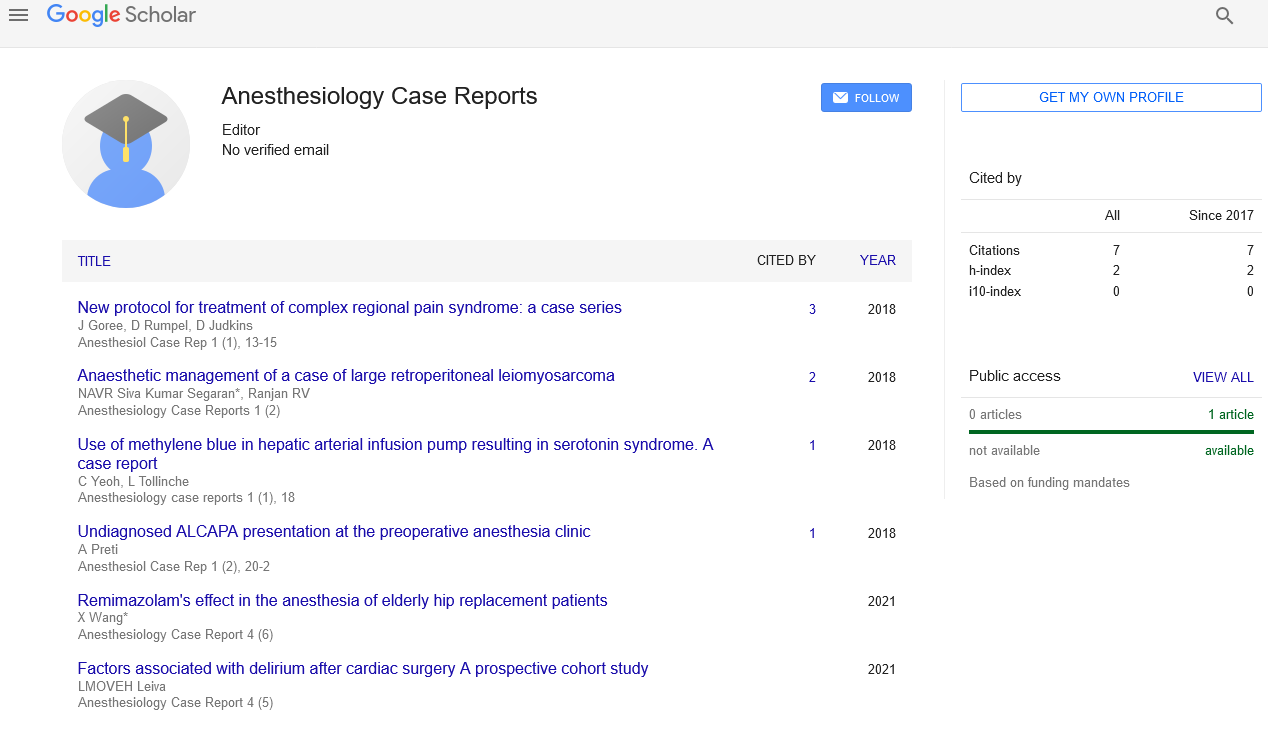Pulmonary embolism and deep vein thrombosis
Received: 11-Mar-2022, Manuscript No. pulacr-22-4988; Editor assigned: 14-Mar-2022, Pre QC No. pulacr-22-4988 (PQ); Reviewed: 21-Mar-2022 QC No. pulacr-22-4988 (QC); Revised: 24-Mar-2022, Manuscript No. pulacr-22-4988 (R); Published: 28-Mar-2022, DOI: 10.37532. pulacr.22.5.2.7-8
This open-access article is distributed under the terms of the Creative Commons Attribution Non-Commercial License (CC BY-NC) (http://creativecommons.org/licenses/by-nc/4.0/), which permits reuse, distribution and reproduction of the article, provided that the original work is properly cited and the reuse is restricted to noncommercial purposes. For commercial reuse, contact reprints@pulsus.com
Abstract
In hospitalised patients, venous thromboembolism, which includes deep vein thrombosis and pulmonary embolism, is common. Systemic thromboprophylaxis is critical, particularly in individuals with inherited or acquired patient-specific risk factors, or in patients having procedures with a high risk of postoperative deep vein thrombosis and pulmonary embolism. These individuals, who are on preventive or therapeutic anticoagulant dosages, may need surgery. Depending on the type and urgency of the surgery, as well as the degree of anticoagulation as determined by studies, general or regional anaesthetic may be considered. If the anaesthesiologist is aware of the pharmacokinetics of medicines that alter haemostasis, the question about the type of anaesthesia can be resolved.
Keywords
Pulmonary embolism; mechanical thromboprophylaxis; deep vein thrombosis; general anaesthesia
Introduction
Heart Today’s anaesthesiologists, who specialise as perioperative physicians, are frequently confronted with life-threatening situations (high-risk patients or surgeries). One such disorder is venous thromboembolism, which includes deep vein thrombosis and pulmonary embolism. Though doctors and surgeons in India have begun to recognise the need of thromboprophylaxis in preventing the morbidity and mortality associated with venous thromboembolism (VTE), there is still a lot of heterogeneity in how this dangerous condition is treated.
In 1998, a 25-year population-based study found a symptomatic VTE yearly incidence of 117 per 100,000 people [1]. Over the last 20 years, the rate of Deep Vein Thrombosis (DVT) among hospitalised patients has risen from 0.8 percent to 1.3 percent (reported in 2005) [2]. DVT has been discovered to be common in people having surgical treatments. DVT is about 14 percent in gynaecological surgery, 22 percent in neurosurgery, 26 percent in abdominal surgery, and 45 percent to 60 percent in patients undergoing hip and knee procedures without thromboprophylaxis [3]. Though the exact incidence of VTE in the Indian population is unknown due to inconsistent reporting of such cases, it is not likely to differ significantly from that in the western population [4].
Pulmonary Embolism
Because the signs and symptoms of PE are not highly specific, the clinical diagnosis of acute pulmonary embolism is not very accurate. Well’s Diagnostic Scoring System was utilised to diagnose PE based on the clinical presentation. A high likelihood score (>6 out of a maximum of 12.5) indicates a high risk of PE (58 percent). Patients with concomitant cardiac or pulmonary illness make diagnosis more complicated. Dyspnoea, tachypnoea, and pleuritic pain are the most common clinical manifestations in patients with PE, with one or more of these symptoms occurring in 97 percent of patients [5].
Mechanical thromboprophylaxis
Mechanical thromboprophylaxis can be used on its own or in conjunction with pharmaceutical thromboprophylaxis. These devices improve venous blood flow, preventing venous stasis in the legs. They should not be used in people who already have DVT. Graduated compression stockings deliver various degrees of pressure to the leg and thigh, with the most pressure applied at the ankle and gradually decreasing proximally. Venous stasis can be avoided by using a pressure gradient. Legs are subjected to intermittent pneumatic compression. To prevent venous stasis, these cuffs alternately inflate and deflate. Mechanical foot pumps improve blood flow in leg veins by providing intermittent plantar compression (IPC) in each foot [6].
General anaesthesia
If general anaesthesia is required, balanced anaesthesia, similar to that used for major surgery, may be used. During anaesthesia, the co-morbid conditions require specific attention. Compression stockings or intermittent pneumatic compression on the lower limbs may be used to avoid DVT in some circumstances. In patients having general anaesthesia, tissue factor, plasminogen activator inhibitor-1 (PAI-1) and tissue plasminogen activator all increase significantly, resulting in a hypercoagulable and hypofibrinolytic state. Increased amounts of thrombin-antithrombin complexes and fibrinopeptide A have been found to support this theory. PAI-1 levels in epidural anaesthesia patients remain normal at preoperative levels. As a result, epidural anaesthesia has proven to be effective in preventing hypercoagulable states and DVT [7,8]
The fine equilibrium of the haemostatic system is disturbed by surgical operations and other conditions such as immobility, infections, cancer, medications, hypothermia, metabolic acidosis, colloids, and extracorporeal circulation. To diagnose pulmonary embolism during surgery, meticulous intraoperative surveillance is required.
REFERENCES
- Silverstein MD, Heit JA, Mohr DN, et al. Trends in the incidence of deep vein thrombosis and pulmonary embolism: a 25-year population-based study. Arch Intern Med. 1998;158(6):585-93.[Crossref] [Google Scholar]
- Stein PD, Beemath A, Olson RE. Trends in the incidence of pulmonary embolism and deep venous thrombosis in hospitalized patients. Am J Cardiol. 2005;95(12):1525-6. [Crossref] [Google Scholar]
- Arcelus JI, Caprini JA, Motykie GD, et al. Matching risk with treatment strategies in deep vein thrombosis management. Blood Coagul Fibrinolysis: Int J Haemost Thromb 1999;10:S37-43. [Crossref] [Google Scholar]
- Parakh R, Kakkar VV, Kakkar AK. Management of venous thromboembolism. JAPI. 2007;55:49-70.[ Crossref] [Google Scholar]
- Geerts WH, Bergqvist D, Pineo GF, et al. Prevention of venous thromboembolism. Chest. 2008;133(6):381S-453S. [Crossref] [Google Scholar]
- Douketis JD, Berger PB, Dunn AS, et al. The perioperative management of antithrombotic therapy: American College of Chest Physicians evidence-based clinical practice guidelines. Chest. 2008;133(6):299S-339S.[Crossref] [Google Scholar]
- Levy JH, Tanaka KA, Hursting MJ. Reducing thrombotic complications in the perioperative setting: an update on heparin-induced thrombocytopenia. Anesth Analg. 2007;105(3):570-82. [Crossref] [Google scholar]
- Koh SC, Pua HL, Tay DH, et al. The effects of gynaecological surgery on coagulation activation, fibrinolysis and fibrinolytic inhibitor in patients with and without ketorolac infusion. Thromb Res. 1995;79(5-6):501-14. [Crossref] [Google scholar]





